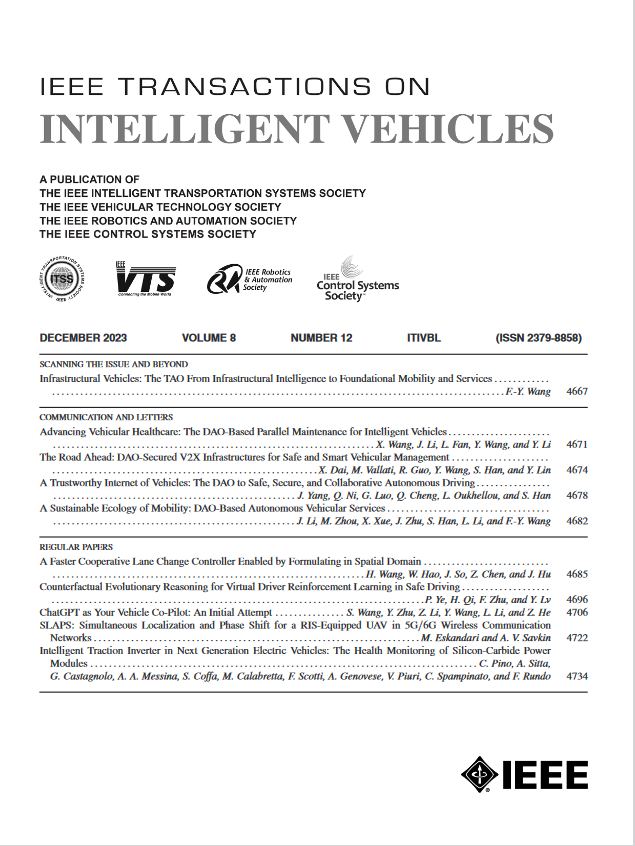Glare Mitigation for Enhanced Autonomous Vehicle Perception
IF 14
1区 工程技术
Q1 COMPUTER SCIENCE, ARTIFICIAL INTELLIGENCE
引用次数: 0
Abstract
Vision sensors are versatile and can capture a wide range of visual cues, such as color, texture, shape, and depth. This versatility, along with the relatively inexpensive availability of machine vision cameras, played an important role in adopting vision-based environment perception systems in autonomous vehicles (AVs). However, vision-based perception systems can be easily affected by glare in the presence of a bright source of light, such as the sun or the headlights of the oncoming vehicle at night or simply by light reflecting off snow or ice-covered surfaces; scenarios encountered frequently during driving. In this paper, we investigate various glare reduction techniques, including the proposed saturated pixel-aware glare reduction technique for improved performance of the computer vision (CV) tasks employed by the perception layer of AVs. We evaluate these glare reduction methods based on various performance metrics of the CV algorithms used by the perception layer. Specifically, we considered object detection, object recognition, object tracking, depth estimation, and lane detection which are crucial for autonomous driving. The experimental findings validate the efficacy of the proposed glare reduction approach, showcasing enhanced performance across diverse perception tasks and remarkable resilience against varying levels of glare.增强自动驾驶汽车感知的眩光缓解
视觉传感器用途广泛,可以捕捉各种视觉线索,如颜色、纹理、形状和深度。这种多功能性,以及相对便宜的机器视觉相机,在自动驾驶汽车(AVs)中采用基于视觉的环境感知系统方面发挥了重要作用。然而,基于视觉的感知系统很容易受到明亮光源的眩光的影响,比如夜间的太阳或迎面而来的车辆的前灯,或者仅仅受到冰雪覆盖的表面反射的光的影响;驾驶过程中经常遇到的场景。在本文中,我们研究了各种减少眩光的技术,包括提出的饱和像素感知减少眩光技术,以提高自动驾驶汽车感知层所采用的计算机视觉(CV)任务的性能。我们基于感知层使用的CV算法的各种性能指标来评估这些减少眩光的方法。具体来说,我们考虑了对自动驾驶至关重要的目标检测、目标识别、目标跟踪、深度估计和车道检测。实验结果验证了所提出的减少眩光方法的有效性,展示了在不同感知任务中的增强性能和对不同水平眩光的显着弹性。
本文章由计算机程序翻译,如有差异,请以英文原文为准。
求助全文
约1分钟内获得全文
求助全文
来源期刊

IEEE Transactions on Intelligent Vehicles
Mathematics-Control and Optimization
CiteScore
12.10
自引率
13.40%
发文量
177
期刊介绍:
The IEEE Transactions on Intelligent Vehicles (T-IV) is a premier platform for publishing peer-reviewed articles that present innovative research concepts, application results, significant theoretical findings, and application case studies in the field of intelligent vehicles. With a particular emphasis on automated vehicles within roadway environments, T-IV aims to raise awareness of pressing research and application challenges.
Our focus is on providing critical information to the intelligent vehicle community, serving as a dissemination vehicle for IEEE ITS Society members and others interested in learning about the state-of-the-art developments and progress in research and applications related to intelligent vehicles. Join us in advancing knowledge and innovation in this dynamic field.
 求助内容:
求助内容: 应助结果提醒方式:
应助结果提醒方式:


